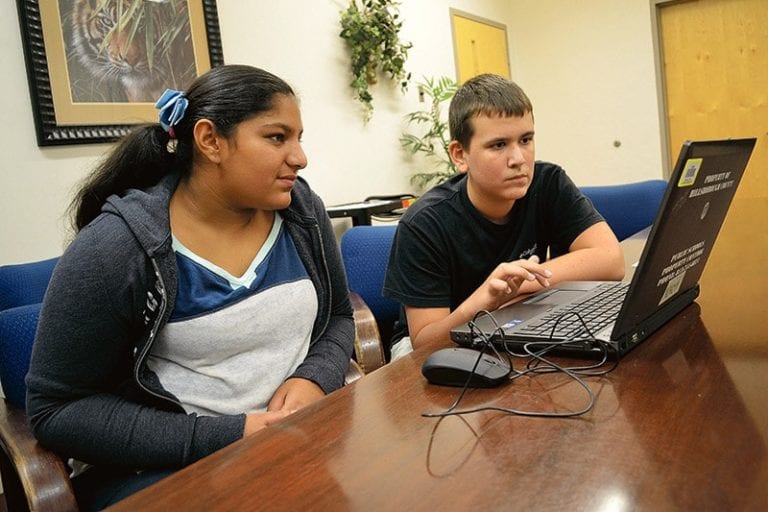
There were pages and pages of a heated Facebook conversation that Tomlin Middle School Principal Susan Sullivan had to sort through. The messages were between two male students. One student had accused eighth-grader Tyler Woosley of beating him up.
The student had gotten into a fight, but it wasn’t with Tyler. In fact, the two boys were friends, before Tyler started receiving the taunting messages.
“He cussed me out over Facebook,” Tyler said. “I couldn’t believe one of my friends would say that about me.”
When Tyler’s mother found the messages, she contacted the school. The other student’s mother also was informed. She had no idea the conversation was taking place.
“We want parents to be involved,” Sullivan said. “That’s our message. Communicate and talk with your child.”
That message is part of a Frameworks of Tampa Bay program that seeks to foster positive youth development by teaching students about bullying. For nine days, students attended a workshop class. On Sept. 23, parents and students were invited to a seminar at the school.
Rita Peters, of the State Attorney’s Office, spoke about how to recognize bullying, how to avoid it, and how to heal from it.
“I learned how to handle it more,” eighth-grader Noor Pal said. “Don’t be a bystander. A lot of people are watching, too. They might be scared to get involved, but you have to.”
Another message Noor took away from Peters was to avoid social networking. That’s where the bulk of bullying starts.
“She told us exactly what we have been seeing,” Sullivan said. “Usually, it starts with some kind of romantic situation gone wrong. A boy and girl break up or the ex and current girlfriend get in a fight. It’s mostly girls. Not all the time.”
New social media apps pop up almost daily. Twitter, Instagram, Snapchat all allow students to connect with each other in cyberspace. By far, the worst is Facebook.
“I hate Facebook,” Sullivan said.
The number of students estimated to be involved in cyber-bullying varies. Some statistics have it at 72%, while others are as low as 5.5%. According to Cyberbullying Research Center’s surveys, students who have experienced cyber-bullying at least once range from 18.8% to 40.6%.
Sullivan encourages parents to read their child’s text messages and monitor their online activity.
“Parents of our middle-schoolers need to be up in their business,” Sullivan said. “They need to be keeping tabs on Facebook, Instagram, Twitter, Snapchat.
“A lot of times, it’s used inappropriately,” Sullivan said. “Adults use it to keep up with each other. But kids can abuse it.”
Because it’s online, cyber-bullying often can go unnoticed by parents, teachers and even friends.
“We see bullying in the hallways,” Sullivan said. “But, we can stop it and mediate.”
Noor has witnessed some of her friends being bullied. She said her friends will become mad or sad. They also have changes in grades, appetites and withdraw.
“Fights between friends happen,” Noor said. “They’ll come up to them in the hallway, act like friends and then say, ‘Why did you do that?’ They spread rumors.”
However, the most damaging conversations don’t occur face to face.
“It’s mostly cyber-bullying,” Noor said.
“It’s because they’re scared to say it to someone’s face,” Tyler said.
Contact Amber Jurgensen at ajurgensen@plantcityobserver.com.
ADVICE FOR PARENTS
Rita Peters, who spoke Sept. 23, at Tomlin Middle School, as part of a Frameworks anti-bullying seminar, encourages parents to ban social media use.
If parents still want his or her child to be online, here are some other useful tips:
• Read your child’s texts and online messages.
• Have your child leave their phone with you at night.
• Place the home computer in a public area. Don’t let your child have one in their room
• Encourage communication. Talk with your child about their day and friends.
SIGNS OF BULLYING
• Changes in mood, appetite and grades
• Withdrawal
• Change in friends or cutting off friendships completely
